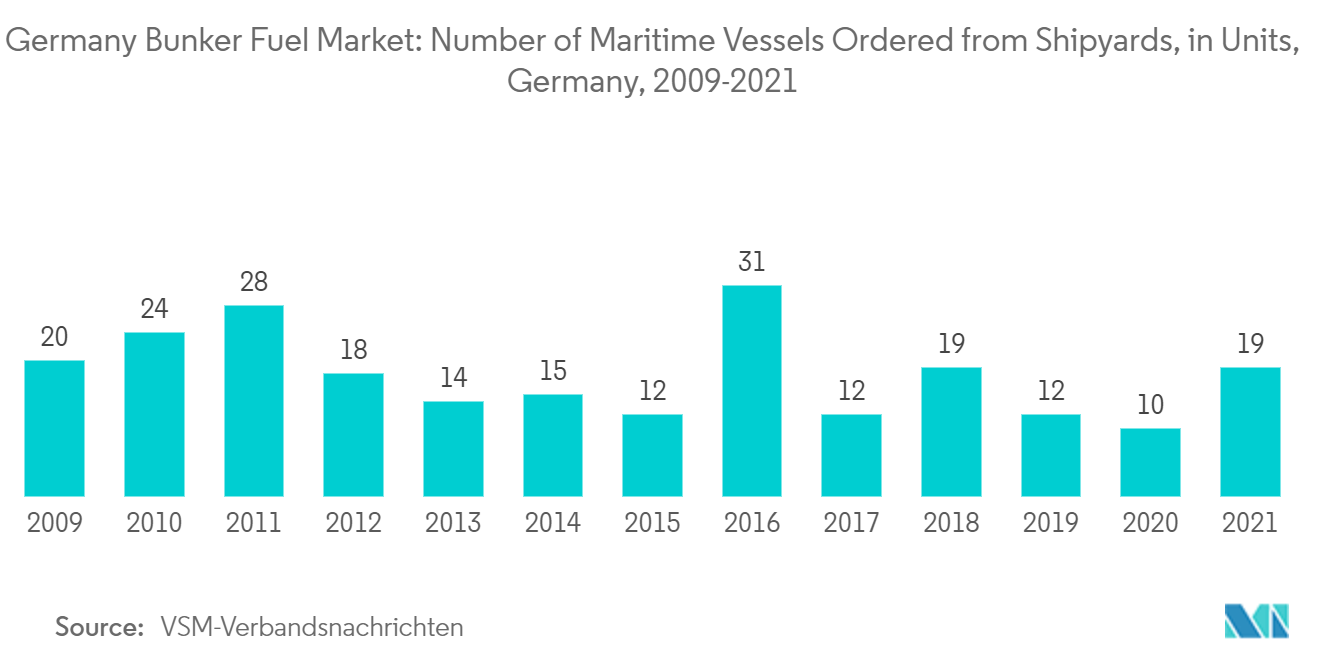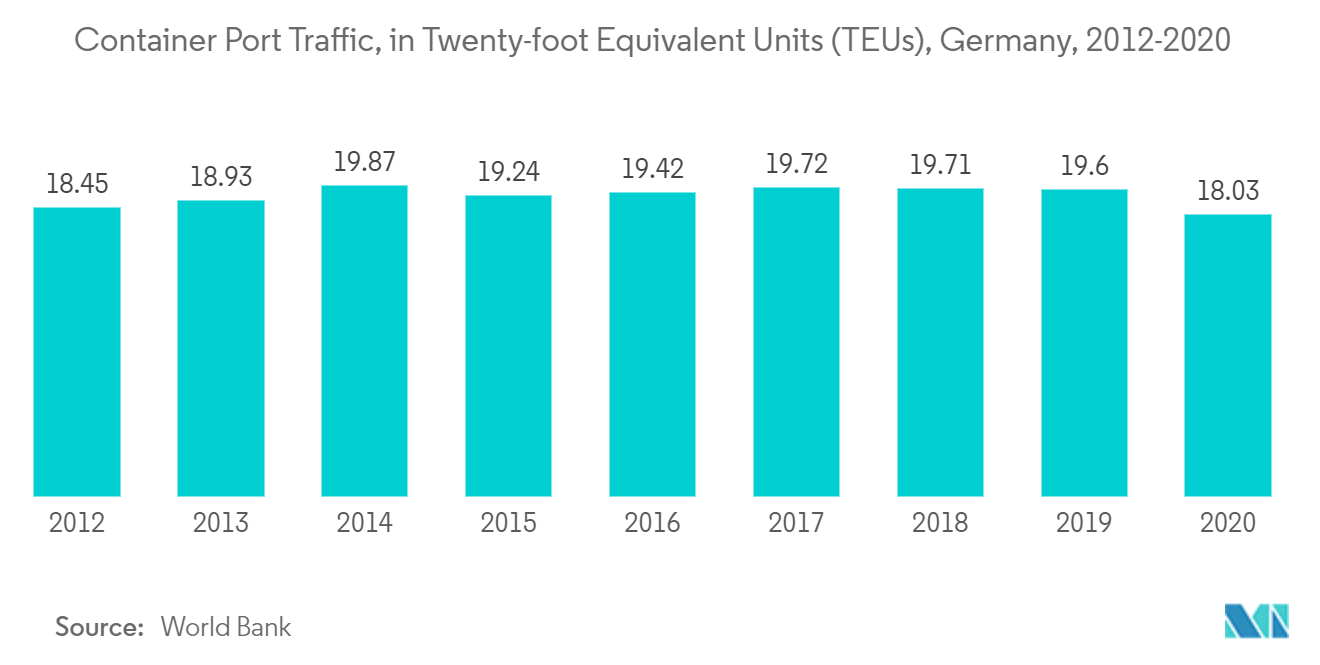Market Trends of Germany Bunker Fuel Industry
Very Low Sulfur Fuel Oil (VLSFO) to Witness Significant Demand
- Marine fuel containing less than 0.5% sulfur is generally called very low-sulfur fuel oil. From January 1, 2020, HSFO could only be used in ships that had scrubbers installed to reduce emissions, which will drive the demand for VLSFO.
- Most of the high-sulfur bunker fuel oil (HSFO) market is expected to be shortly replaced by low-sulfur alternatives. Most of the VLSFO available in the market is blended from residual and distillate components, which are blended with various cutters of varying sulfur and viscosity to create an on-spec product.
- According to the German Shipowners' Association (VDR) survey published at the end of 2019, more than 80 percent of German shipping companies had plans to switch to the new sulfur-reduced low-sulfur fuel oil (LSFO) starting in 2020. Further, in June 2020, German liquid bulk terminal operator HES Wilhelmshaven Tank Terminal GmbH (HWTT), a 100% subsidiary of HES International B.V., announced the launch of its Low Sulphur Fuel Oil (LSFO) bunker fuel production facility.
- According to VSM-Verbandsnachrichten, in 2021, 19 new maritime vessels will be ordered from German shipyards. This was almost double the number of orders placed in 2020. The growing number of maritime vessels in Germany drives the demand for very low-sulfur fuel oil.
- Therefore, with the increased demand for cleaner fuel and the implementation of IMO 2020 Regulations, the price of very low-sulfur fuel oil (VLSFO) is expected to rise significantly in the forecast period.

Rising Maritime Trade to Boost Market Growth
- Due to more international trade, maritime trade has been growing across the country, and the sea route is thought to be the fastest and most convenient way to trade internationally.According to the world bank, in 2020, container port traffic in Germany reached 18.03 Twenty-foot Equivalent Units (TEUs).
- Germany is one of the top sea-trading countries. Also, the German ports of Hamburg and Bremen/Bremerhaven were included among the top 50 container ports by the World Shipping Council. The Hapag-Lloyd shipping line is a well-known international carrier. One of the top 10 ports that regularly increased their LSCI performance between 2006 and 2019 is the Wilhelmshaven port in Germany.
- Germany has always been a strong shipping nation and is one of the largest shipping countries in the European Union. Germany had more than 360 shipping companies operating as of 2021. Also, regarding twenty-foot equivalent units (TEUs), Germany is one of the biggest global container shipping nations.
- As of 2021, there were over 70 ports in total in Germany. These include major all-purpose ports such as the Port of Hamburg, Emden, Kiel, Bremen, Rostock, Wismar, etc.
- Ships transport about 90% of all goods coming from Germany.The implication of IMO 2020, starting in January 2020, led to the shift to low sulfur content fuel or installing scrubbers to reduce emissions. The conversion to LNG-fueled ships is restricted to newly built ships owing to the higher modification costs for an engine replacement.
- The government in Germany has also set Maritime Agenda 2025; under the program, special attention has been given to the sustainability of maritime trade, given the rising international trade and the growing focus on sulfur-containing fuel. This drives growth in the bunker fuel market in Germany.

